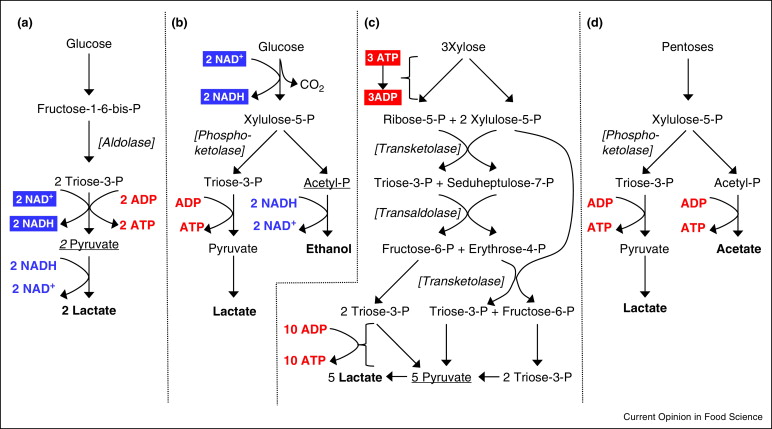Connie: Dear friends, thank you for joining us on this beautiful Saturday night. Today, we again invited our old friend Dr. Hofstadter to bring us interesting discussions on probiotics. Thank you for being here with us, Dr. Hofstadter.
Dr. Hofstadter: Thank you for the invitation, Connie. Good evening, everyone. It is quite nice to see you again. I’m very glad to be here.
Connie: In the previous program, we talked a lot about the lactic acid bacteria as probiotics and their long development history. They are added to functional products that can improve human health. Lactic acid bacteria are very important in the dairy industry as they are necessary for the production of several new and traditional dairy products. Compared with other similar bacterial genera, the metabolism of lactic acid bacteria is different and unique. And this special metabolism is determined by the genome. Should we start from the characteristics of the genome of lactic acid bacteria?
Dr. Hofstadter: Sounds good to me. The genome of lactic acid bacteria is very small, ranging from 2 megabases to 3.4 megabases. However, despite its narrow definition of the function, its genetic diversity is impressive. The historical definition of lactic acid bacteria is based on the similar metabolism of carbohydrates, that is, the production of lactic acid. The central genomes of 213 Lactobacillus strains and closely related species consist of 73 genes. None of them are related to carbohydrate metabolism.
Connie: An incredibly complex relationship between a large number of lactic acid bacteria has been revealed by the detailed analysis of the evolution of the center metabolism of carbon. And as we all know; lactic acid bacteria are a general term for bacteria that can use fermentable carbohydrates to produce large amounts of lactic acid. What can you tell us about the carbon metabolism of lactic acid bacteria?
Dr. Hofstadter: The fermentation pathway of lactic acid bacteria is not conducive to energy acquisition because each molecule of sugar can only produce one or two ATPs. A high conversion rate will slow down the energy acquisition, so the overall biomass gain is not high. In addition, the biosynthetic pathway and central carbon metabolism required for cell growth are highly decoupled in lactic acid bacteria. Because they adapt to the nutrient-rich ecological niche. These niches make it easier for bacteria to occupy several spaces for building cell structures instead of synthesizing them through carbon sources.
Connie: So we can say that energy is obtained from carbon sources, but the efficiency is very low?
Dr. Hofstadter: That’s right. This is why a large amount of sugar is fermented, and not much sugar is lost in biomass production. This combination obtains the optimal yield during the fermentation process, making it attractive in the industrial field. Some application suggestions have already been proposed.
Connie: Will all lactic acid bacteria ferment to produce lactic acid?
Dr. Hofstadter: Not all. I want to point out that lactic acid bacteria can be divided into three categories. They are obligate homolactic fermentation tanks with lactic acid as the only fermentation product, obligate isotactic acid fermentation microorganisms, and special isotactic acid fermentation tanks that produce not only lactic acid but also carbon dioxide and ethanol.
Connie: How does sugar turn into lactic acid? Which of these steps will generate energy?
Dr. Hofstadter: Generally speaking, ATP can be obtained by oxidation of sugar to pyruvate. To reduce pyruvate, it is necessary to close the equilibrium by removing electrons. Pyruvate is directly reduced to produce lactic acid. Due to the diversity of lactic acid bacteria, there are also many types of formation processes.

Connie: What’s the point for many lactic acid bacteria to utilize various pentoses and hexoses?
Dr. Hofstadter: This makes it the perfect starting condition for the utilization of lignocellulosic sugars, which are the most abundant renewable resource on earth and have been studied as the future energy fuel.
Connie: In addition to the low energy produced by the carbon metabolism of lactic acid bacteria, what are the other characteristics?
Dr. Hofstadter: A particularly interesting feature of the carbon metabolism of lactic acid bacteria is the flexibility of electron acceptor metabolism. In general, there are significant differences between the electron acceptor and the metabolic structure. One of the most basic electron acceptors is oxygen, but sometimes oxygen is not present and pyruvate is the substituent. If there is oxygen, it will be reduced to water without any energy conservation.
Connie: Lactose is the main carbon source in cow’s milk. It is a disaccharide composed of glucose and galactose connected by β-1,4-glycosidic bonds. It is also an important energy source for the growth and reproduction of lactic acid bacteria during dairy fermentation. In addition to lactose, which sugars will lactic acid bacteria use as carbon sources?
Dr. Hofstadter: Glycerin or fructose is a compound that can accept other molecules that are beneficial to the chemical industry. Many heterogeneous fermenting lactic acid bacteria can grow in the presence of fructose. On the one hand, fructose is used as a carbon source, and on the other hand, it is reduced to mannitol. To produce biomass and obtain energy, growth is utilized in the presence of glucose, and fructose acts as an electron acceptor. But when two carbon sources exist at the same time, microorganisms use glycerol as an electron acceptor. Glycerin significantly improves the efficiency of sugar energy production and enables the efficient conversion of glycerol into 1,3-propanediol.
Connie: If glycerin acts as an electron acceptor, what reactions will it cause?
Dr. Hofstadter: The first step in using glycerol as an electron acceptor is the redox-neutral effect of glycerol dehydration. Through dehydration, 3-hydroxypropionaldehyde is produced. The second step is the reduction of aldehydes. This is the actual reaction of electron dissipation. But, you know, this reaction and similar reactions have nothing to do with energy or redox metabolism.
Connie: Will the intermediate metabolites produced during these reactions accumulate?
Dr. Hofstadter: In nature, these ketone or aldehyde intermediates do not accumulate in growing cells. Because they are highly toxic.
Connie: What is the significance of understanding carbon metabolism for the application of lactic acid bacteria?

Dr. Hofstadter: It is very important to understand the carbon metabolism process of lactose for health benefits. The unused lactose and accumulated galactose in dairy products will not only affect the quality of the product but also cause a burden on human health, especially for patients with lactose intolerance and galactosemia. In other words, we need to understand the mechanisms of lactic acid bacteria so that we can better apply them to products that improve human health.
Connie: Makes sense. That’s it for this episode on the carbon metabolism of lactic acid bacteria. Thanks, Dr. Hofstadter, for sharing your knowledge with us. And thanks everyone for tuning in. For next week, we will continue our discussion on a new section on probiotics. Until then!
Dr. Hofstadter: Thanks, everyone. I hope we will see you next time.
